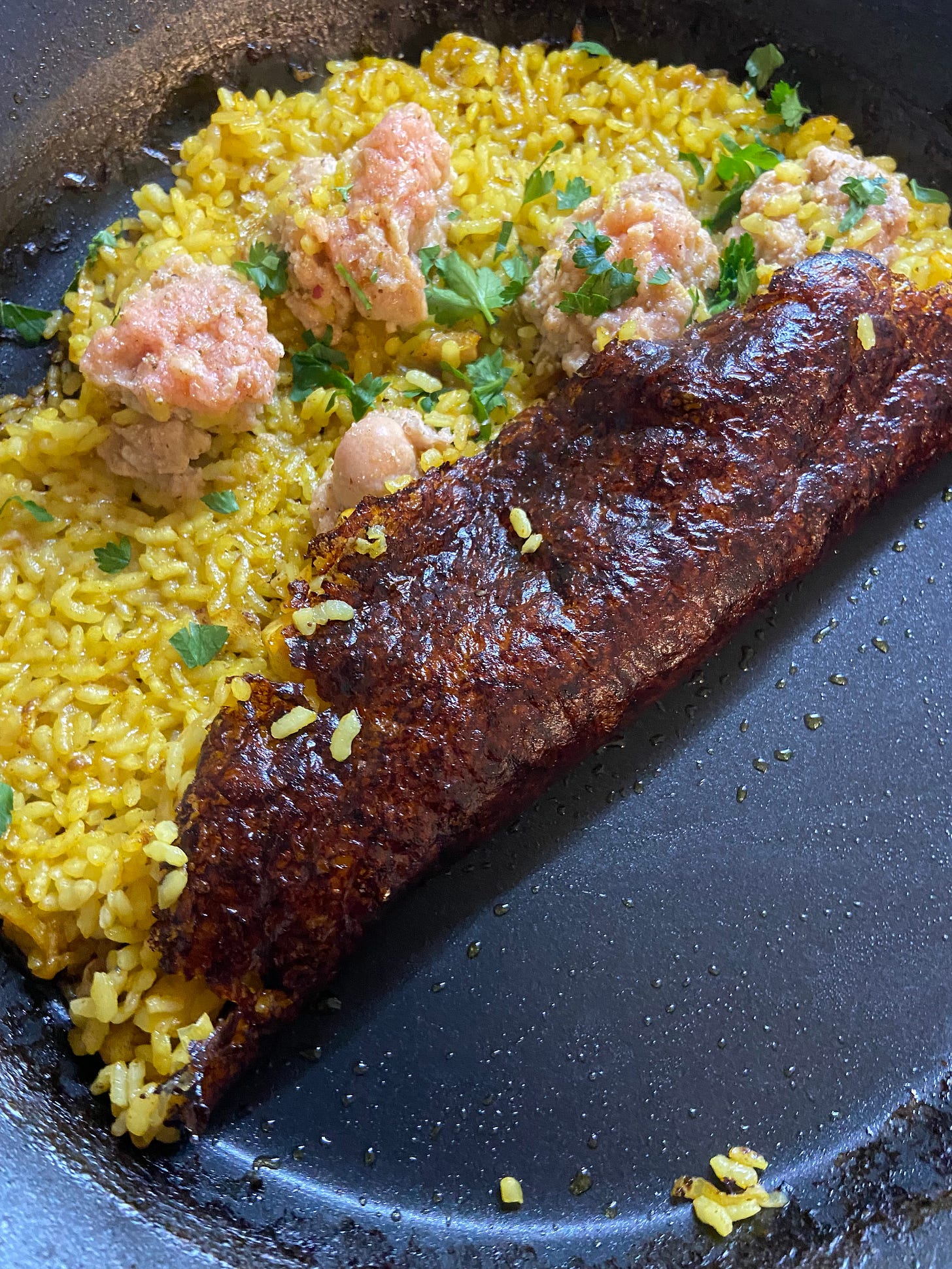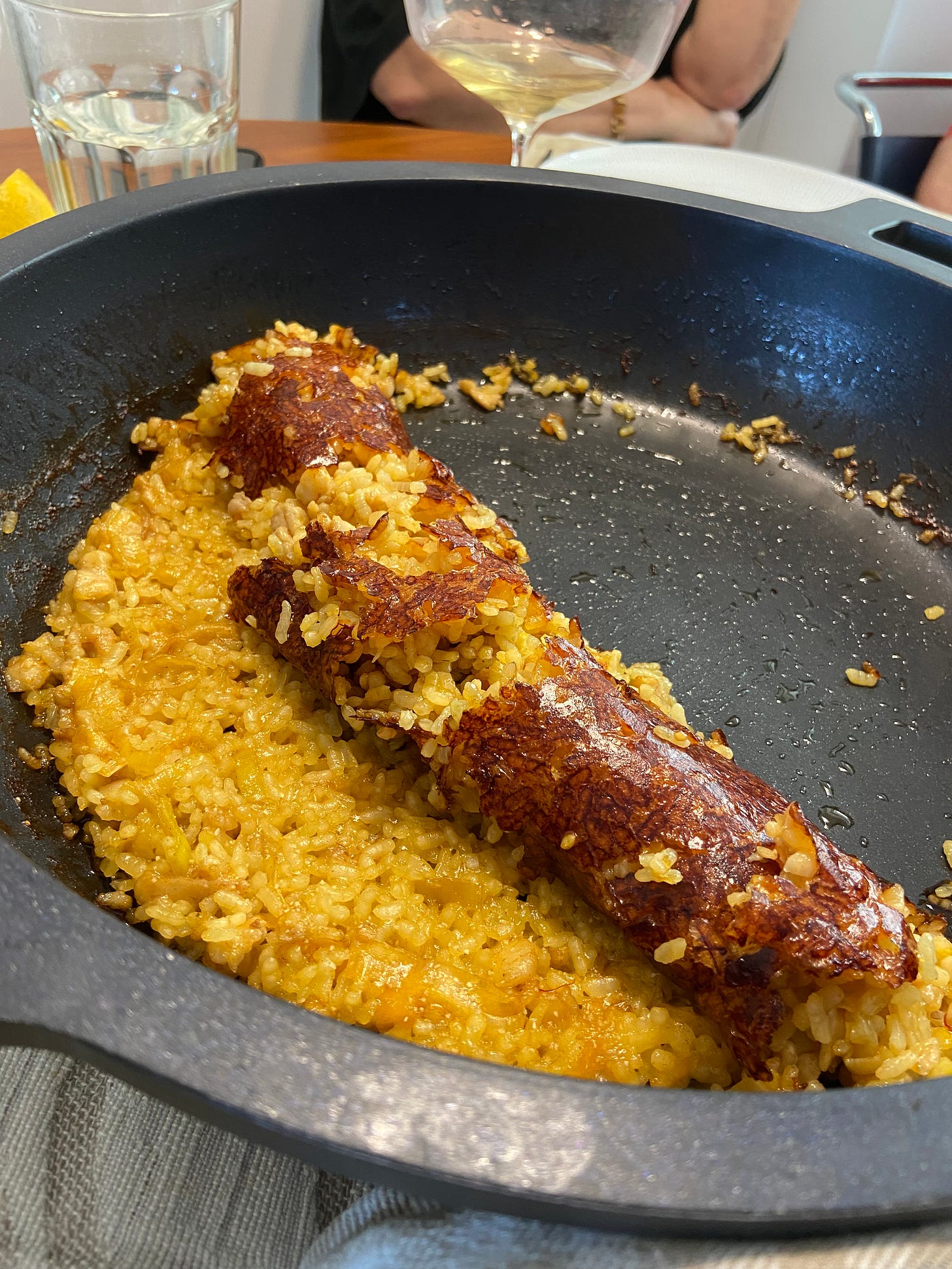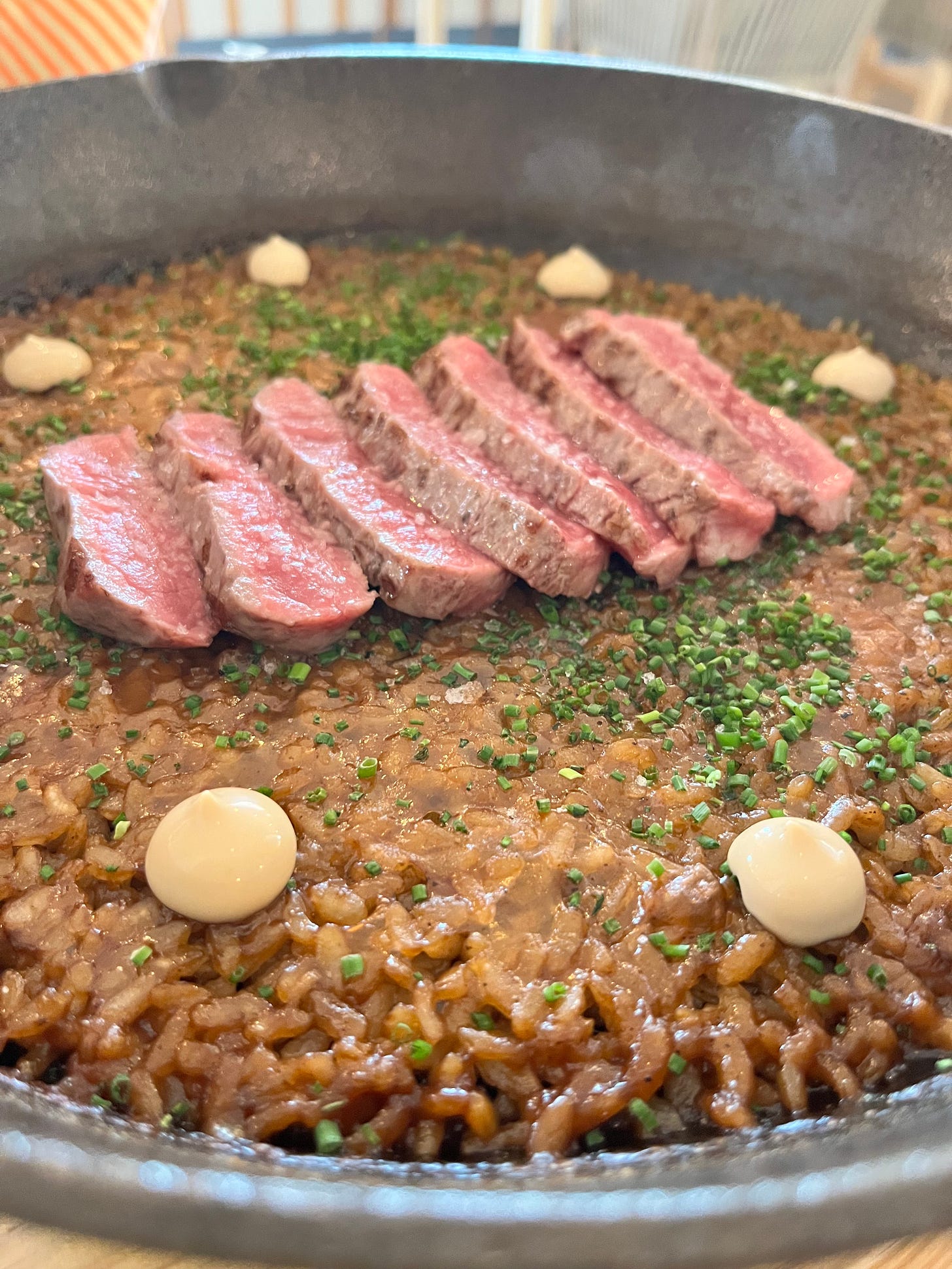It is, hands down, my favourite rice dish.
I would trade all risotto (even the delicious ones by Andrea Leali) for socarrat. There is no match for it, not Indian cumin rice, Persian saffron rice, or Portuguese oven-baked rice: to me, socarrat is perfection, deliciousness, and everything I desire in rice.
What I like about socarrat, philosophically speaking, is that it is a completely yin and yang dish. The two main ingredients (stock packed with collagen on one side and rice on the other) are equally crucial for attaining excellence.
And like in anything in life, the balance is subtle, fleeting and ephemeral. The results are variable, too, as we are not professional cooks and our kitchens vary greatly in appliances, cooking power, and daily shenanigans.
One thing is certain, though. This rice is delicious.
Rice
The first crucial step in enjoying a plate of socarrat is to get the perfect rice grain as the main ingredient.
You will need Bomba rice, also known as arroz bomba in Spanish and arròs bomba in Valencian for this dish.
There is no way around it.
Bomba rice is a delightful short-grain variety from eastern parts of Spain. It is not just a rice variety but a cultural symbol of the region, just like Vialone Nano or Carolino are for the respective gastronomies in Northern Italy and Portugal.
This type of rice is perfect for making paella - the most famous expression of Valencian cuisine, now sadly microwaved into oblivion by every fake tourist restaurant everywhere.
Bomba rice is unique because, unlike other short-grain varieties, it doesn't get sticky when cooked (like sushi-type rice) and won't thicken the cooking liquid (as Arborio rice does). This rice has a high amylose content and a beautiful pearly white colour. Its most important feature is its capacity to absorb two or three times its volume in water without bursting. Thus, it requires more water to cook bomba rice than similar varieties, and the grains retain their pearl-shaped structure and shape well after cooking.
It probably came to the Iberian peninsula from India through the Middle East, but it found its perfect, forever home in the fertile lands around Valencia. Bomba rice is one of the priciest rice varieties in Spain, particularly the Denominación de Origen (D.O.) types from Calasparra.
In Portugal, it is produced by Rice Crafters in the Rio Sado area. In Spain you will find a lot of brands, and small producers, each with their own production of tiny perfection.
Stock
Socarrat is a meal that cannot, however, be a vegetarian one. Despite what others say, the key ingredient for socarrat is collagen and this can only be found in bones - be they animal bones or fish ones.
A vegetarian paella is canonically an aberration but is possible to make. A vegetarian risotto is more than possible - the best risottos are in fact plant based.
But alas, a vegetarian socarrat is an impossible feast: vegetable stock lacks the collagen, which in turn is what makes socarrat what it is: a thin, ephemeral crust of caramelized rice enveloped by its cooking stock. And this cooking stock, to react with its Maillard reaction and become crunchy and gooey at the same time, needs collagen.
I admit, I tried to do it with store-bought collagen dissolved in vegetable broth. It did not work, so save yourself the trouble.
The stock can be made in advance, and frozen. That is how we do it.
For beef stock you will need bones cut longitudinally, some chicken bones and chicken breast cage, carrots, celery, parsley, onions and leek.
For fish stocks, swap the beef bones for a large fish head and more fish bones.
Let it simmer - the beef one for almost 3 hours on very low heat, the fish one for less than two.
Pass it through your chinois, and let it cool.
Cooking
Cooking is an act of love and an art, and socarrat is the perfect testing ground for your patience. You will need the perfect pan: over the years we have experimented with everything, from my faithful Lodge cast iron one to a copper and aluminium one, from a non stick one to a Creuset.
The secret is in the fire, which has to be constant - close any window to avoid drafts, if you happen to use gas!
First, finely chop half a leek and stir-fry it lightly with some olive oil in the pan, adding some pimentón de la Vera and/or smoked and Hungarian paprika to your taste. I promise no angry Valencian will come to chase you while you make your perfect socarrat.
The prerogative for “angry in the kitchen” goes to Italians, and they are too busy fighting over a canned Carbonara these days to care about anything else.
You will then add the rice - in perfect proportions that you will have to calculate: an amount of rice equals an amount of stock - roughly 5 and a half times more. But it will all depend on the size of the pan: you will want the rice to be flat in a one layer surface, not to pile up like in a paella on multiple rows.
Your stock will need to be piping hot when you pour it into the pan. Dissolve your saffron stems in it, just before pouring it into the pan.
Stir once. Salt lightly. Let it sit, turning the heat slightly down halfway thew cooking, and regularly rotate the pan ever so gently.
If you want a video recipe, Paolo Casagrande of Lasarte in Barcelona has a nice video of it, or Quique Dacosta.
Plating
You can serve it directly from the pan, spooning it out with a wooden spoon. Top it with whatever you would like: beef or vegetables if its stock is meat-based, or fish and seafood and vegetables if fish-based. Or just vegetables like I do.
Go crazy, but remember that the toppings in this case are really the cherry on top: even your best Wagyu beef or blue lobster will be just acting as a side dish, while you’ll enjoy this special rice.
Eating
Absolute star cook and Chef Marco Nascimento, in the tiny coastal village of Porto Covo in Portugal, makes a special one with local beef steak and local rice. The restaurant, Alma Nomada, is oddly located within a camping ground, and is hands-down my favorite in Portugal and this socarrat is beyond delicious.
In London you could opt for StreetXO (now closed) but there are many other restaurants serving this delicacy.
My recommendation is that you get hold of the technique, and start making your own. It is quite addictive.











Visca el socarrat!
Ok, now you had me want to eat it!
PS: I think there's a typo, did you mean "impossible feat"?